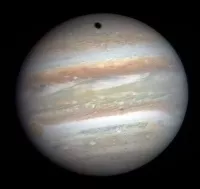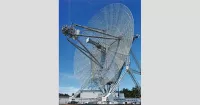An aurora, also known as the northern or southern lights, is a natural light display in the sky, primarily seen in high-latitude regions. Auroras manifest as dynamic patterns of radiant light, appearing as curtains, rays, spirals, or flickers that illuminate the sky.
1908: Robert W. Service's satirical poem about the aurora
In 1908, Robert W. Service's satirical poem "The Ballad of the Northern Lights" features a Yukon prospector who believes the aurora is a glow from a radium mine.
1920: Tycho Brahe recommends sulfur to cure infectious diseases 'brought on by the sulfurous vapours of the Aurora Borealis'
In 1920, Walter William Bryant wrote in his book Kepler that Tycho Brahe "seems to have been something of a homoeopathist, for he recommends sulfur to cure infectious diseases 'brought on by the sulfurous vapours of the Aurora Borealis'".
1949: Early aurora imaging using SCR-270 radar
In 1949, the University of Saskatchewan conducted early work on imaging auroras using the SCR-270 radar.
1955: Study of radio emissions from Io
Since 1955, radio emissions generated by electric currents due to the relative motion between Jupiter and its moon Io have been studied.
1960: Discovery of electrons causing auroral emissions
In 1960, a rocket flight from Fort Churchill, Canada, discovered that a flux of electrons entering the atmosphere from above is the immediate cause of ionization and excitation of atmospheric constituents, leading to auroral emissions.
1963: Discovery of auroral substorms
Around 1963, it was discovered that auroras undergo global changes called auroral substorms. These substorms can change quiet arcs into active displays on the dark side in a few minutes, before gradually reverting over 1-3 hours.
1967: Attempts to image conjugate auroras by aircraft
In 1967, attempts were made to image conjugate auroras by aircraft from Alaska and New Zealand with some success. Conjugate auroras are mirror-image auroras found at conjugate points in the northern and southern hemispheres.
1968: Attempts to image conjugate auroras by aircraft
In 1968, attempts were made to image conjugate auroras by aircraft from Alaska and New Zealand with some success. Conjugate auroras are mirror-image auroras found at conjugate points in the northern and southern hemispheres.
1969: Bright auroras associated with Birkeland currents
In 1969, Schield et al. associated bright auroras with Birkeland currents, which flow into the ionosphere on one side of the pole and out on the other.
1970: Attempts to image conjugate auroras by aircraft
In 1970, attempts were made to image conjugate auroras by aircraft from Alaska and New Zealand with some success. Conjugate auroras are mirror-image auroras found at conjugate points in the northern and southern hemispheres.
1971: Attempts to image conjugate auroras by aircraft
In 1971, attempts were made to image conjugate auroras by aircraft from Alaska and New Zealand with some success. Conjugate auroras are mirror-image auroras found at conjugate points in the northern and southern hemispheres.
1972: Discovery of auroral kilometric radiation (AKR)
In 1972, auroral kilometric radiation (AKR), a strong radio emission around 150 kHz associated with auroras, was discovered. Ionospheric absorption restricts AKR observations to space-based instruments. X-ray emissions from auroral particles were also detected.
1973: Bright auroras associated with Birkeland currents
In 1973, Zmuda and Armstrong also associated bright auroras with Birkeland currents, which flow into the ionosphere on one side of the pole and out on the other.
1994: Brekke describes auroras as "curtains"
In 1994, Brekke described some auroras as having a "curtain" appearance, with folds that enhance the effect. These arcs can fragment and fill the sky, known as discrete auroras, sometimes bright enough to read by.
2000: Chinese legend of aurora around 2000 BC
Around 2000 BC, according to a Chinese legend, a young woman named Fubao witnessed a magical band of light that turned into a bright halo around the Big Dipper. Moved by the sight, she gave birth to Emperor Xuanyuan.
August 2004: Aurora detected on Mars by Mars Express
On 14 August 2004, an aurora was detected on Mars by the SPICAM instrument aboard Mars Express in the Terra Cimmeria region. The emission region correlated with a strong magnetic field, suggesting it was caused by electrons moving along magnetic lines.
2007: Clark describes five main aurora forms
In 2007, Clark described five main forms of auroras that can be seen from the ground, ranked by visibility.
February 2008: THEMIS probes determine triggering event for magnetospheric substorms
On 26 February 2008, THEMIS probes determined the triggering event for magnetospheric substorms. Measurements from two probes indicated a magnetic reconnection event 96 seconds before auroral intensification.
2014: Cometary auroras observed on comet 67P/Churyumov–Gerasimenko
In 2014, cometary auroras were observed on comet 67P/Churyumov–Gerasimenko by multiple instruments on the Rosetta spacecraft at far-ultraviolet wavelengths.
July 2015: First ever extra-solar auroras discovered
In July 2015, the first ever extra-solar auroras were discovered over the brown dwarf star LSR J1835+3259. These auroras were millions of times brighter than Earth's northern lights.
2016: Cometary auroras observed on comet 67P/Churyumov–Gerasimenko
Between 2014 and 2016, cometary auroras were observed on comet 67P/Churyumov–Gerasimenko by multiple instruments on the Rosetta spacecraft. The auroras were observed at far-ultraviolet wavelengths.
2016: Citizen scientists name "STEVE"
In 2016, citizen scientists described a previously unknown type of aurora they named "STEVE" (Strong Thermal Emission Velocity Enhancement). STEVE is caused by hot plasma.
2017: Japanese diary suggests a storm was larger than the Carrington event
In 2017, the discovery of a 1770 Japanese diary depicting auroras suggested that the storm may have been 7% larger than the Carrington event.
March 2020: Red aurora in 620 A.D. might be produced by a magnetic storm
In March 2020, researchers from Japan's Graduate University for Advanced Studies and National Institute of Polar Research claimed that red pheasant tails witnessed across the night sky over Japan in 620 A.D. might be a red aurora produced during a magnetic storm.
2020: First report of dune aurora phenomenon
The dune aurora phenomenon was first reported in 2020 by Finnish citizen scientists. It appears as regularly spaced, parallel stripes in the green diffuse aurora, resembling sand dunes, and is believed to be caused by modulation of atomic oxygen density by a large-scale atmospheric wave.
2021: Evidence shows substorms may be networked communities
In 2021, recent evidence has shown that individual separate substorms may in fact be correlated networked communities.
2021: Confirmation of dune aurora phenomenon
In 2021, the dune aurora phenomenon was confirmed. This phenomenon, discovered by Finnish citizen scientists, consists of regularly-spaced, parallel stripes of brighter emission in the green diffuse aurora giving the impression of sand dunes.
May 2024: Aurora borealis observed in Ferdows, Iran
In May 2024, a series of solar storms caused the aurora borealis to be observed as far south as Ferdows, Iran.
Mentioned in this timeline

Jupiter is the fifth and largest planet from the Sun...

Radar is a radiodetermination system using radio waves to detect...
New Zealand is an island country located in the southwestern...
Japan is an East Asian island country situated in the...
Canada is a North American country the second largest in...

Earth the third planet from the Sun is unique in...
Trending

Sydney Jeannine Zmrzel known as Maxxine Dupri in WWE is an American professional wrestler model and dancer Currently signed to...

8 months ago George Foreman: A remarkable life beyond the Rumble in the Jungle.

Luke Littler is a rising star in professional darts currently playing in Professional Darts Corporation PDC events He has secured...

6 months ago Morgan Wallen Headlines Camp Randall Concert After 28-Year Hiatus, Benefiting Madison Residents.

30 days ago Josh Giddey Confronts Courtside Spectator During Bulls-Hornets Game; Fan Ejected After Altercation.

1 month ago Maxxine Dupri, assisted by AJ Lee, dethrones Becky Lynch for Intercontinental Title on Raw!
Popular

Stranger Things created by the Duffer Brothers is a popular...

XXXTentacion born Jahseh Dwayne Ricardo Onfroy was a controversial yet...
The Kennedy Center Honors are annual awards recognizing individuals and...
Turning Point USA TPUSA is an American nonprofit organization founded...

Bernie Sanders is a prominent American politician currently serving as...

Candace Owens is an American conservative political commentator and author...

